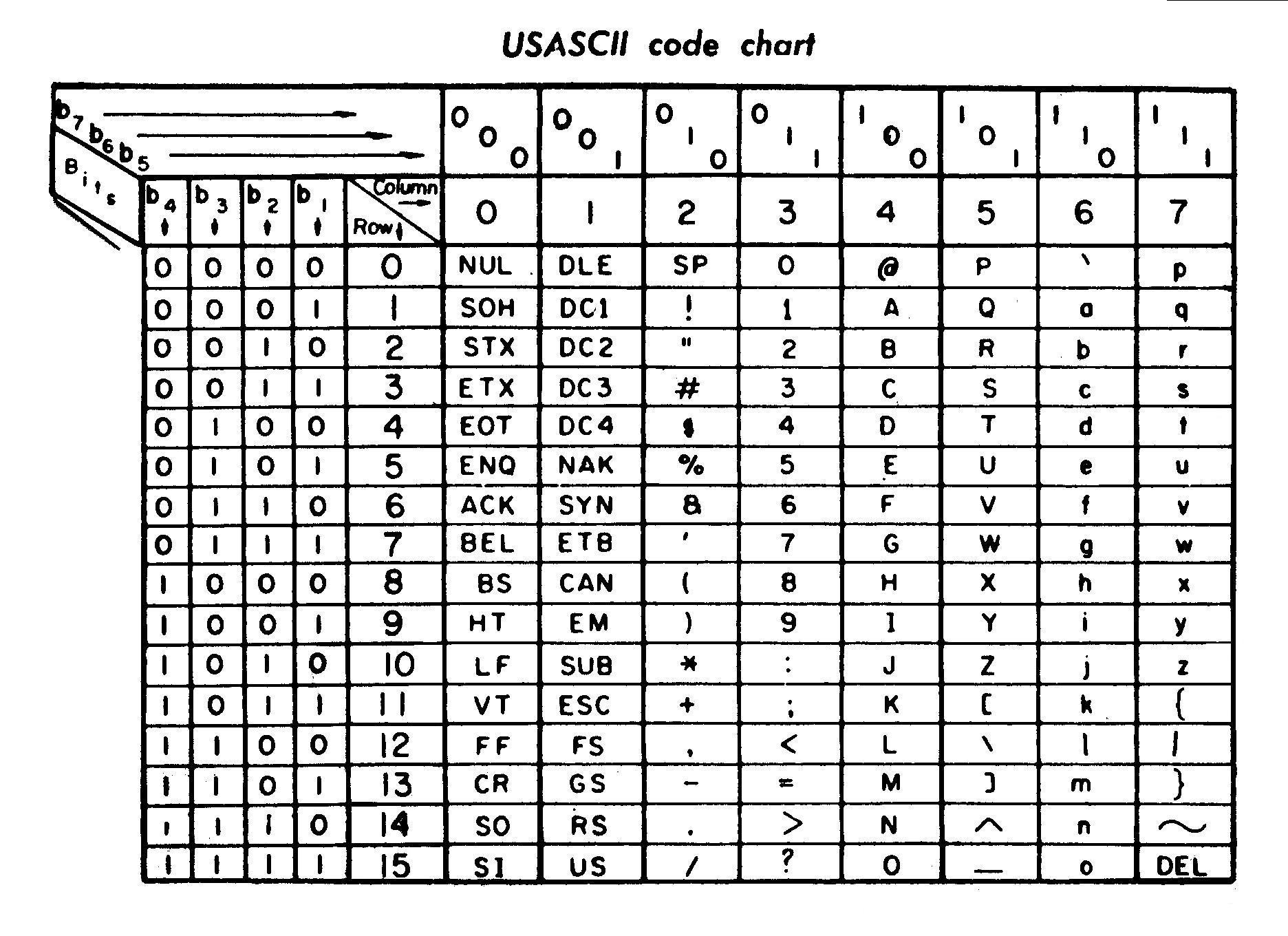Is there any logic behind ASCII codes' ordering?
I was teaching C to my younger brother studying engineering. I was explaining him how different data-types are actually stored in the memory. I explained him the logistics b
-
There are historical reasons, mainly to make ASCII codes easy to convert:
Digits (0x30 to 0x39) have the binary prefix 110000:
0 is 110000 1 is 110001 2 is 110010etc. So if you wipe out the prefix (the first two '1's), you end up with the digit in binary coded decimal.
Capital letters have the binary prefix 1000000:
A is 1000001 B is 1000010 C is 1000011etc. Same thing, if you remove the prefix (the first '1'), you end up with alphabet-indexed characters (A is 1, Z is 26, etc).
Lowercase letters have the binary prefix 1100000:
a is 1100001 b is 1100010 c is 1100011etc. Same as above. So if you add 32 (100000) to a capital letter, you have the lowercase version.
讨论(0) -
Here is very detailed history and description of ASCII codes: http://en.wikipedia.org/wiki/ASCII
In short:- ASCII is based on teleprinter encoding standards
- first 30 characters are "nonprintable" - used for text formatting
- then they continue with printable characters, roughly in order they are placed on keyboard. Check your keyboard:
- space,
- upper case sign on number caps: !, ", #, ...,
- numbers
- signs usually placed at the end of keyboard row with numbers - upper case
- capital letters, alphabetically
- signs usually placed at the end of keyboard rows with letters - upper case
- small letters, alphabetically
- signs usually placed at the end of keyboard rows with letters - lower case
讨论(0) -
- 'A' is 0x41 in hexidecimal.
- 'a' is 0x61 in hexidecimal.
- '0' thru '9' is 0x30 - 0x39 in hexidecimal.
So at least it is easy to remember the numbers for
A,aand0-9. I have no idea about the symbols. See The Wikipedia article on ASCII Ordering.讨论(0) -
Wikipedia:
The code itself was structured so that most control codes were together, and all graphic codes were together. The first two columns (32 positions) were reserved for control characters.[14] The "space" character had to come before graphics to make sorting algorithms easy, so it became position 0x20.[15] The committee decided it was important to support upper case 64-character alphabets, and chose to structure ASCII so it could easily be reduced to a usable 64-character set of graphic codes.[16] Lower case letters were therefore not interleaved with upper case. To keep options open for lower case letters and other graphics, the special and numeric codes were placed before the letters, and the letter 'A' was placed in position 0x41 to match the draft of the corresponding British standard.[17] The digits 0–9 were placed so they correspond to values in binary prefixed with 011, making conversion with binary-coded decimal straightforward.
讨论(0) -
This chart shows it quite well from wikipedia: Notice the two columns of control 2 of upper 2 of lower, and then gaps filled in with misc.

Also bear in mind that ASCII was developed based on what had passed before. For more detail on the history of ASCII, see this superb article by Tom Jennings, which also includes the meaning and usage of some of the stranger control characters.
讨论(0) -
The distance between
Aandais 32. That's quite round number, isn't it?The gap of 6 characters between capital letters and small letters is because (32 - 26) = 6. (Note: there are 26 letters in the English alphabet).
讨论(0)
- 热议问题

 加载中...
加载中...